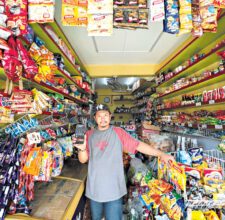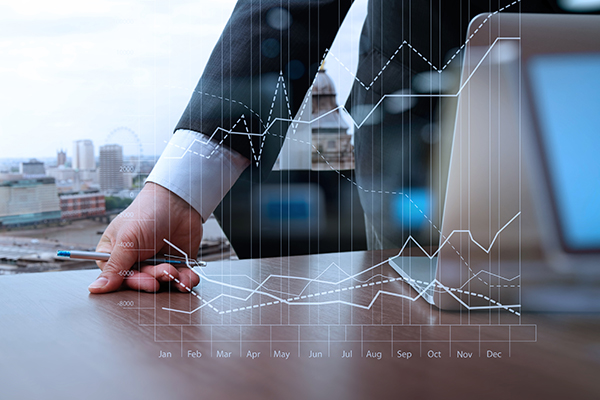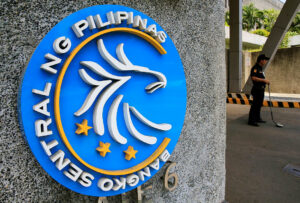Identity by number

Shortly after Christmas Day, the law requiring the registration of all SIM (subscriber identity module) cards took effect. In this line, all mobile phone and mobile data users have until April 2023 to register their SIM cards with public telecommunication service providers using valid identification requirements. After the deadline, all unregistered SIM cards will be deactivated.
Prior to this, in September 2021, the mobile portability law took effect, which allowed mobile phone and mobile data users to keep their existing mobile phone numbers even as they move from one service provider to another. In this sense, a person already identified with a certain number has the option to keep that identifier intact.
And in 2019, I believe, the Bankers Association of the Philippines also announced that it would launch its digital banking ID registry that would pave the way for electronic know-your-customer (KYC) procedures and electronic data storage sharing and exchange among banks. The banking ID registry is expected to help in vetting banking transactions and in identifying clients.
A couple of years before, in 2018, the National ID law was passed, which aimed to establish a single national identification system for all citizens and resident aliens in the country. Each citizen and resident alien will be issued a National ID and assigned a national ID number. In addition, personal data include biometrics that match those also collected for passports and driver’s licenses.
Way before the National ID law, regulations already required the use of a tax identification number (TIN) in many government transactions. Vehicle registration, for instance, or sales transactions involving cars and real estate all require the use of a TIN identifying sellers and buyers. All those employed also have TINs, social security system, and PhilHealth numbers.
Truly, it is becoming a digitally connected world. And people may soon find themselves identified or known more by a certain set of digits — a customer number, a national ID number, or a mobile number — rather than their given names. It is pretty much like how many alumni of the University of the Philippines system, decades after graduation, still recall their UP Student Number.
And, of course, digital footprints are all over now, unlike maybe two or three years ago. With mobile payment solutions like GCash and Maya, among others, and the use of online retail platforms and ordering systems, many consumers now have “bank” or digital payment accounts and shopping identities, among other digital identifiers.
Anything that has a digital identifier leaves a digital footprint that can be tracked, monitored, and observed. Now, even money — actual bills and coins — are used less frequently since many big banking transactions are mostly done electronically. Legitimate money transfers are done electronically, even country to country, and rarely physically. Even retail payments and banking have gone digital. And then there is also the rise of cryptocurrencies.
As I had previously noted, back in the day, one needed to physically go to the bank branch to open an account. In turn, one was issued a passbook, and only through that passbook could one transact with the bank. In this sense, your data cannot be hacked, and your money cannot be moved or “stolen” electronically. And, physical money was in the bank vault.
Nowadays, however, a bank doesn’t even need a physical branch to operate. Banking transactions can be done online. Retail payments are also done electronically. With new initiatives, more people are brought into the “formal” financial system. A banking digital ID registry is enforced, a national ID system is in place, mobile portability is in effect, and these make SIM registration icing on the cake.
One consequence is that all this also helps identify all financial transactions that are subject to tax, and make it easier for withholding agents to deduct all taxes due the government. This includes digital sales. The same initiative, along with the banks’ digital ID registry system and the use of the national ID system, also assist in tax administration and in fighting money laundering.
Couple this with the law to make mobile numbers “portable,” that allows a person to maintain his cellular number for life, and including that mobile number among the information contained in a national ID, then there is really no escape even for those doing financial transactions via mobile platforms. Again, SIM registration is just the icing on the cake.
I recall a book by authors Kieron O’Hara and Nigel Shadbolt, both based in the United Kingdom. Titled, The Spy in the Coffee Machine, the book came to memory anew after reading all the news about SIM registration. As I noted previously, for mobile portability to work, any and all mobile numbers in use must first be registered, whether post-paid or pre-paid. And with registration comes a government or private database, whether electronic or otherwise, that captures a person’s personal information and other data.
The book, published by OneWorld in 2008, discussed the emergence of “hyper-surveillance,” as the authors noted that as more and more people increasingly used technology for work and leisure, all their electronic activity would actually “leave behind digital footprints that can be used to track our movements.”
The “spy,” as O’Hara and Shadbolt called it, is now in all our cars, telephones or mobile phones, and even coffee machines and other electronic devices, through what they referred to as “tiny computers communicating wirelessly via the Internet [that] can serve as miniature witnesses, forming powerful networks whose emergent behavior can be very complex, intelligent, and invasive.”
The book posed the question: “How much of an infringement on privacy are they? Exposing the invasion of our privacy from CCTVs to blogs, The Spy in the Coffee Machine explores what — if anything — we can do to prevent it from disappearing forever in the digital age, and provides readers with a much-needed wake-up call to the benefits and dangers of this new technology.”
As I noted in an earlier column, I consider the book required reading for those interested in knowing more about surveillance. It used to be that the ability of an inanimate object, like a coffee machine or a cellular phone, was limited to “following commands.” But, with the era of customization, we have actually allowed these inanimate things, through technology and artificial intelligence, to understand, learn, and even memorize or recall our peculiarities, desires, wants, preferences, attitudes, and behavior.
The SIM registration database — matching names with pictures and mobile numbers as well as other personal information — will just be another “digital footprint” that can be hacked, and the information possibly misused. And the Data Privacy Act is simply no match to those who intend to do harm.
Couple this with the ability to track phones and their owners through GPS and cell sites, and match this with face-recognition software employed through public and private CCTV networks, then “Big Brother” is now more a reality than fiction. Electronic devices, particularly those that use signals, frequencies, air waves, and access the internet are “spies in our midst,” or the “observers” among us that gather and analyze intelligence, and perhaps share such intelligence with others. These are devices that “watch” us and “learn” about us, and attempt to supposedly “understand” how to better “serve” us.
It may yet be a case of man vs machine. Machines are no longer just tools with humans behind them. Through AI technology, machines have actually learned to think for themselves, and obviously have far more computing power than humans, and thus have the potential ability to out-think us in every way possible.
But “Big Brother” is no longer the government watching us, but it is that network of computers and mobile phones and other electronic devices that develop, capture, and analyze digital footprints and allow those with legal and illegal access to our information to better understand us and to make “informed” decisions about how to either serve us, or steal from us.
The big challenge now for policymakers, regulators, and government and industry leaders is how to best protect the public, the government, and businesses from data breach. After putting in place mobile portability, SIM registration, and the national ID, among others, we need to follow through with next-generation data security and protection. The Data Privacy Act is definitely not enough. We need more safeguards against data breach, which has become a real threat to national and people security.
Marvin Tort is a former managing editor of BusinessWorld, and a former chairman of the Philippine Press Council




